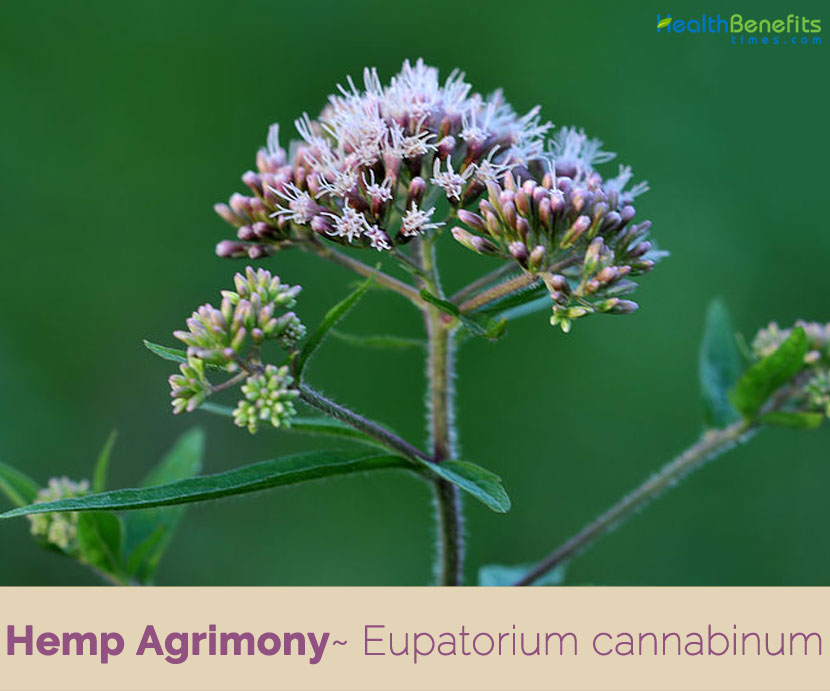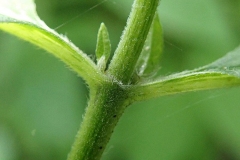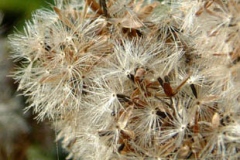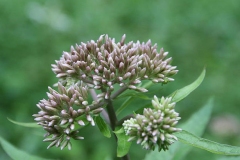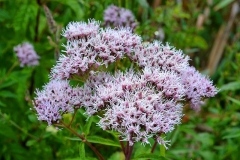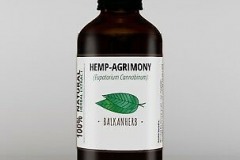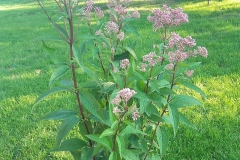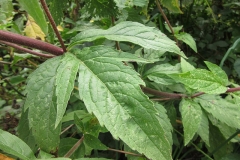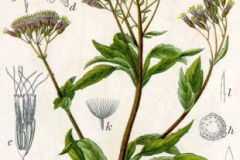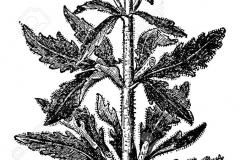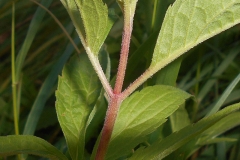| Hemp Agrimony Quick Facts | |
|---|---|
| Name: | Hemp Agrimony |
| Scientific Name: | Eupatorium cannabinum |
| Origin | Africa, Asia, Europe, Northern America and Australasia |
| Colors | Greyish brown–black |
| Shapes | Achene about 2 or 3 mm long, borne by a pappus with hairs 3 to 5 mm long |
| Taste | Bitter, pungent |
| Health benefits | Cures Kidneys and urinary tract, Digestive system, Bones and joints, Skin Health, Insect and mold repellent |
| Name | Hemp Agrimony |
|---|---|
| Scientific Name | Eupatorium cannabinum |
| Native | Africa (Algeria and Morocco), Asia (Armenia, Azerbaijan, Georgia, Russian Federation, Iran, Iraq, Palestine, Lebanon, Syria, Turkey, Nepal and China), Europe (Estonia, Latvia, Lithuania, Moldova, Russian Federation, Ukraine, Austria, Belgium, Czech, Germany, Hungary, Netherlands, Poland, Slovakia, Switzerland, Denmark, Finland, Ireland, Norway, Sweden, United Kingdom, Albania, Bosnia and Herzegovina, Bulgaria, Croatia, Greece, Italy, Macedonia, Montenegro, Romania, Serbia, Slovenia, France, Portugal and Spain), Northern America (Canada and USA) Australasia (New Zealand) |
| Common Names | Boneset, common Dutch agrimony, common hemp agrimony, eupatorio, gravel root, hemp agrimony, hindheal, holy rope, khad al bint, Koninginnenkruid, koyunpitragi, linwe di tchet, St John’s herb, water agrimony, water maudlin, sweet-smelling trefoil, holy rope |
| Name in Other Languages | Albanian: Eupator kërpor, kërpi ujës Arabic: أوبَتُرْيوم قِنَّبي, Khad Albint, Ghaffath, Ghafith, Ghafith Kinnabi, Kinab maa Aragonese: Eupatorio, orégano de agua Armenian: Apuzanuk kanep’anman (Ապուզանուկ կանեփանման) Azerbaijan: Känäfvarï eypator (Kәнәфвари еyпатор), Kənafvari asırqalotu Basque: Ariketa, orotxeta, orrorcheta Bulgarian: Div konop (див коноп) Catalan: Altes i mires, canabassa, eupatori, lladracá, lladracà, lladrecá, Canabassa, Cànem bord, Eupatori, Herba de talls, Lladracà Chinese: Dàmá yèzélán (大麻叶泽兰) Croat: Čičak janjći vodeni, Divljika, Griva konjska, Konopljuša, Paštitkasta konopljuša, Razhodnik, Slavlja divja Croatian: Konopljika, divljika, čičak janjći vodeni Czech: Sadec konopáč Danish: Hjortetrøst, Hamp-Hjortetrøst Dutch: Koninginnekruid, leverkruid English: Hemp agrimony, water hemp agrimony, Holy Rope, Oregano marsh grass Estonian: Harilik vesikanep Euskera: Ariketa, orrotxeta Finnish: Punalatva, Rantapunalatva French: Chanvre d’eau, Eupatoire à feuilles de Chanvre, Eupatoire Chanvrine, Herbe de sainte Cunégonde, Origan des marais, Chanvrin, cannabine, chanvrière, eupatoire d’Avicenne, eupatoire des Arabes Galician: Cnáib uisce, eupatorio, eupatório, herba de Santa Cunegunda, herba de Santa Runegundis, herba pulgueira, herba purgueira, porqueira, pulguera, purguera, trevo-cervino Georgian: vardk’anapa (ვარდკანაფა) German: Gewöhnlicher Wasserdost, Kunigundenkraut, Hanf-Wasserdost, Wasserdost, Wasserhanf, Hjortetrøst, Alpkraut, gemeiner Wasserdost Hebrew: Gemeiner Wasserdost, גְּדוֹתַן הַבִּצּוֹת High Aragonese: Orégano de agua Hungarian: Sédkender Irish: Cnáib uisce, Marbhdhraighean Israel (Hebrew): אבפטוריון הביצות, גְּדוֹתַן הַבִּצּוֹת Italian: Canapa acquatica, Lielā krastkaņepe, canapa d’acqua, eupatorio d’Avicenna Limburgan: Hómmelskroed Latvian: Lielā krastkaņepe Lithuanian: Kanapinis kemeras Macedonian: Resnik (ресник) Moldovian: Kynepa kodruluy (Кынепа кодрулуй), Sedaš (Седаш) Norwegian: Hjortetrøst Norwegian Bokmål: Hjortetrøst Norwegian Nynorsk: Hjortetrøst Occitan: Erbo de la fouiro, Eupatori Polish: Sadziec konopiasty Portuguese: Epatouro, eupatório, eupatorio de Avicena, eupatório de Avicena, eupatório-de-Avicena, herba de Santa Cunegunda, purguera, trevo cervino, trevo-cervino Romanian: Cînepa-codrului Russian: Poskonnik konoplevidnyi, Podokonnik konoplevidnyy (Посконник коноплевидный) Serbian: Resnik, obična konopljuša (обична конопљуша) Slovak: Konopáč obyčajný Slovene: Konjska griva Slovenian: Konjska griva Spanish, Castillian: Canabina, canabina de agua, cañamazo, cáñamo acuático, cáñamo de agua, cáñamo silvestre acuático, cáñamo verde, cannabina, cannabina de agua, eupatorio, eupatorio con hojas de cáñamo, eupatorio de América, eupatorio de Avicena, eupatorio de los árabes, eupatorio no legítimo, eupatorio vulgar, garzota blanca, orégano acuático, orégano de agua, canapa aquatica, cáñamo Silvestre, pulguera, zahareña Swedish: Hampflockel, Rantapunalatva, Flocks, Hampört, hampflocks Turkish: Koyun pıtrağı Ukrainian: Sidach konoplyanyy (Сідач конопляний) Valencian: Canabassa Vietnamese: Yên bạch lá gai Welsh: Byddon chwerw |
| Plant Growth Habit | Erect, robust, very handsome, herbaceous, tall growing, perennial |
| Growing Climates | By streams, low damp sites , in woods, rivers, sides of ditches, at the base of cliffs on the seashore, estuarine habitats, lakes, riparian zones, water courses, wetlands, moist woodlands, fens, marshes, along rivers and canals, watery places, damp grasslands, coastal dunes, pastures and permanently cultivated land |
| Soil | Moist but well drained loam soil in a sunny location with a little shade throughout the day |
| Plant Size | Up to 1.5 meters (4.9 feet) tall or more and 1.2 meters (3.9 feet) wide |
| Stem | Reddish in color, covered with downy hair and are woody below. They have a pleasant aromatic smell when cut |
| Leaf | Branch leaves are simple ovate or lanceolate and all leaves are opposite. The leaves are divided at the base into three, or more rarely five, lance-shaped toothed lobes with the middle lobe being much larger than the others |
| Flowering season | July to September |
| Flower | Flower heads are small and consist of a few tubular florets. The aromatic flowers are usually pink or violet, but white-flowered plants occur. |
| Fruit Shape & Size | Achene about 2 or 3 mm long, borne by a pappus with hairs 3 to 5 mm long |
| Fruit Color | Greyish brown–black |
| Lifespan | August to October |
| Propagation | By seed, cuttings and division of the rootstock |
| Taste | Bitter, pungent |
| Plant Parts Used | Whole plant |
| Available Forms | Herbal tea, liquid extracts and tinctures |
| Season | August to October |
| Health Benefits |
|
Plant Description
Hemp Agrimony is an erect, robust, very handsome, herbaceous, tall growing, perennial plant that normally grows up to 1.5 meters (4.9 feet) tall or more and 1.2 meters (3.9 feet) wide. The plant is found growing by streams, low damp sites , in woods, rivers, sides of ditches, at the base of cliffs on the seashore, estuarine habitats, lakes, riparian zones, water courses, wetlands, moist woodlands, fens, marshes, along rivers and canals, watery places, damp grasslands, coastal dunes, pastures and permanently cultivated land. The plant prefers moist but well drained loam soil in a sunny location with a little shade throughout the day. Stems are reddish- brown in color, covered with downy hair and are woody below. They have a pleasant aromatic smell when cut.
It has long been used for medicinal purposes being referred to by Greeks and Romans as well by the medieval Persian physician Aviccena, for what is also known as Eupatorium of Aviccena, and later by the Portuguese Renaissance pioneer in tropical medicine, Garcia da Orta (1563). Presently, hemp-agrimony is used in both Chinese and Indian traditional medicine as well as in natural medicine in western countries with very diverse therapeutic indications including influenza-like illnesses, hypertension and as an anti-tumor agent.
Leaves
Branch leaves are simple ovate or lanceolate and all leaves are opposite. The leaves are divided at the base into three, or more rarely five, lance-shaped toothed lobes with the middle lobe being much larger than the others. This gives the leaf the general form of Hemp, hence the name derived from cannabis. Leaves have short hairs and many glands and there are many reported medicinal uses
Flower
Hemp agrimony produces pinkish-red flowers arranged in flat flower heads on top of the purple flowering stem. Some flower heads are made of pink and white flowers, which is why hemp agrimony is also known as “raspberry and cream” in some areas. Flowers consist of both types of reproductive organs (perfect flowers). Hemp agrimony blooms from July to September. Fragrant flowers attract butterflies and moths and are main pollinators of this plant.
Fruit
Fertile flowers are followed by brown cypsela (type of dry fruit), about 2 or 3 mm long, equipped with pappus, hairy structure about 3 to 5 mm long, which helps dispersal by wind.
Health benefits of Hemp Agrimony
Listed below are some of the well-known health benefits of Hemp Agrimony
1. Cures Kidneys and urinary tract
Hemp Agrimony plant can be used as a diuretic, helping the kidneys work properly and encouraging the excretion of toxins through the kidneys.
2. Digestive system
Hemp agrimony may be used internally as an herbal tea to increase appetite, for indigestion, for increasing the bile flow and helping the liver to function properly as well as helping with gallbladder inflammation, and gallstones. The root of the plant can act as both laxative and diuretic. Ingested in large doses the herb can be strongly laxative but in small doses, it can, in combination with other herbs, be used for constipation.
3. Bones and joints
Hemp agrimony is also used to treat rheumatic disorders such as rheumatism and arthritis, due to its anti-inflammatory effects and diuretic effects, helping the body get rid of the toxins that cause rheumatic pain trough urine.
4. Skin Health
External uses of hemp agrimony, in the form of tincture, include treatments of minor skin infections, bleeding, bruising and wounds.
5. Insect and mold repellent
Leaves have been added to bread to prevent mold growth and vegetable juice made from the leaves has been rubbed into the fur of animals as an insect repelling agent.
Traditional uses and benefits of Hemp Agrimony
- Hemp agrimony has been used chiefly as a detoxifying herb for fevers, colds, flu and other viral conditions.
- It also encourages the removal of waste products via the kidneys.
- Due to its content of alkaloids, the plant should only be used under professional supervision.
- Leaves and flowering tops are alterative, cholagogue, depurative, diuretic, emetic, expectorant, febrifuge, purgative and tonic.
- Plant has a long history of use as a gentle laxative that does not provoke irritation, though excessive doses cause purging and vomiting.
- Tea made from the dried leaves will give quick relief if taken at the onset of influenza.
- Recent research has shown that the plant might have anti-tumor activity, though the plant also contains pyrrolizidine alkaloids that can cause damage or cancer to the liver.
- The roots are diaphoretic, laxative and tonic.
- Recently the plant has been found of use as an immune system stimulant, helping to maintain resistance to acute viral and other infections.
- Homeopathic remedy is made from the leaves.
- It is used in the treatment of influenza and feverish chills and also for disorders of the liver, spleen and gall bladder.
- It is consider a good remedy for purifying the blood, either used by itself, or in combination with other herbs.
- It was used by the peasants for jaundice with swollen feet, and given as an alternative or purifier of the blood in the spring and against scurvy in Holland.
- Extracts have been used for spleen, liver and biliary diseases, diarrhea, snakebites, ulcers, wound healing, fever, as a diuretic, anthelmintic and as a repellent against poisonous animals
- This herb has been used as an herbal remedy for viral infections such as colds and flu.
- Additionally it has been used to treat high fever.
- Ailments such as poor bile flow, gallbladder inflammation, and gallstones have been treated by using this herb.
- It has been used for liver and biliary disorders and also to stimulate the excretion of toxins through the kidneys.
- Hemp agrimony may be used internally as an herbal tea to increase appetite, for indigestion and to treat rheumatic disorders such as rheumatism and arthritis.
- It can, in combination with other herbs, be used for constipation.
- External uses of hemp agrimony, in the form of tincture, include treatments of minor skin infections, bleeding, bruising and wounds.
- It was used in folk medicine of Taiwan for treatment of hepatitis, headache, diarrhea, hypertension, and diabetes mellitus.
- An infusion (100 ml) prepared from the tender leaves was given orally to women once a day for five days in excess bleeding during menstruation period.
- Leaves and stems juice was applied to cuts and bruises to stop bleeding.
- It was also used as detoxifying herbs and for the treatment of fevers, cold, flue and viral conditions.
Other Uses
- Leaves have been laid on bread in order to prevent it from becoming mouldy.
- Leaf juice has been rubbed onto the coats of animals as an insect repellent.
- Goats are said to be the only animals that will eat this plant.
- It was used in different religious and socio-cultural activities including the ritual purification functions of dead.
- An extract of the plant is used as an ingredient in commercial cosmetic preparations as a skin conditioner.
- A coarse fiber can be obtained from the stems.
- The leaves and roots have been used as a raw material for making black and blue dyes.
Precautions
- Avoid use during pregnancy and breast feeding.
- It may block blood flow in the veins.
- It may cause liver damage.
- Higher doses than recommended could lead to irritation of the digestive tract, nausea, vomiting and diarrhea.
References:
http://www.eu-nomen.eu/portal/taxon.php?GUID=4D57465C-91BA-4C90-BFB0-BB984B3CA7C3
https://www.itis.gov/servlet/SingleRpt/SingleRpt?search_topic=TSN&search_value=35984#null
https://pfaf.org/user/Plant.aspx?LatinName=Eupatorium+cannabinum
http://www.floracatalana.net/eupatorium-cannabinum-l-subsp-cannabinum
https://botanical.com/botanical/mgmh/a/agrim016.html
https://plants.usda.gov/core/profile?symbol=EUCA9
http://www.iucngisd.org/gisd/species.php?sc=802
https://gringlobal.irri.org/gringlobal/taxonomydetail.aspx?id=315553
https://www.wikidata.org/wiki/Q744339
https://en.wikipedia.org/wiki/Eupatorium_cannabinum
http://www.theplantlist.org/tpl1.1/record/gcc-133964


